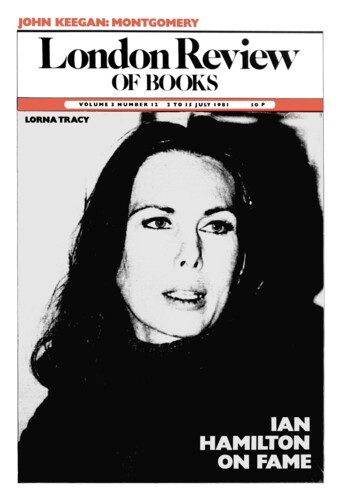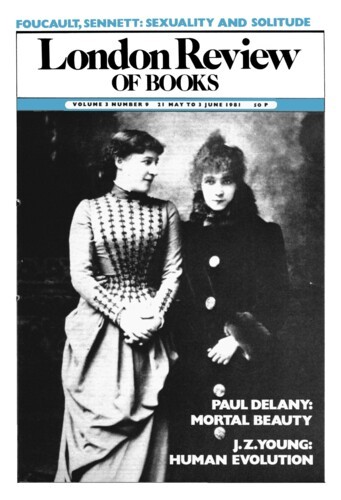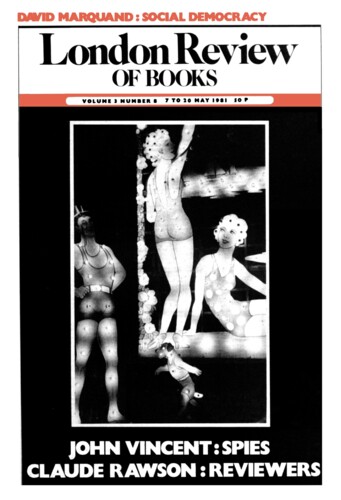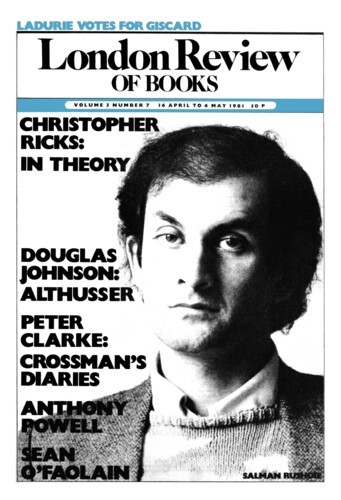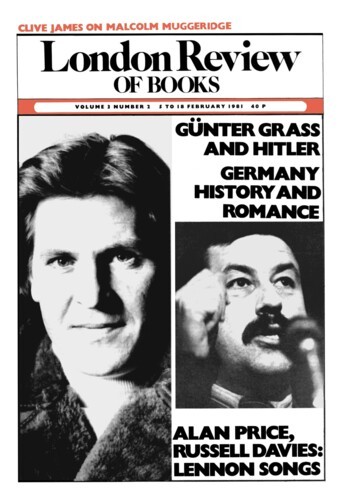Injury Time
Robert Taubman, 2 July 1981
Between the three corpses dug out of the snow in Gorky Park, Moscow and the sables let loose in the snow on Staten Island at the end – ‘black on white, black on white, and then gone’ – there are connections of cause and effect such as few crime novels have ever had to cope with. Gorky Park is a long novel because it tries to deal as fully with Moscow as Simenon’s novels with Paris or Chandler’s with Los Angeles. And perhaps also because its hero, chief homicide investigator Arkady Renko, is knocked about, by his own side and the other side, even more than characters in Simenon or Chandler, and the author allows for injury time. But the story moves fast, and bears lightly its weight of information about the MVD and KGB, the work of the Ethnological Institute in reconstructing the missing face of a corpse, the Soviet monopoly on sable furs, and such ordinary things as the price of beer. It has a Russian kind of poetry – ‘There was a solid, porcelain quality to the sky. It would squeak if you rubbed your thumb on it, Arkady thought’ – as well as an American kind: ‘Schmidt showed a smile as hard as a car grille.’
